Matador Network's Blog, page 2130
March 12, 2015
9 ways to parents like the French
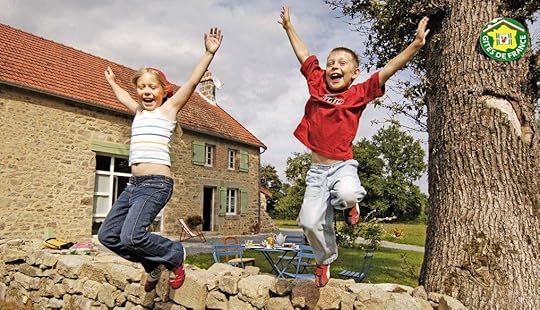
Photo: Tourisme Creuse
1- Do not behave like a helicopter.
Helicopter parenting, where parents “hover” over their children in an attempt to control their lives (social, academic, psychological, athletic, etc.), is the polar opposite of how the French parent. There is little desire to control a child’s life; on the contrary, the goal is rather to make them more self-sufficient early on by letting them experiment, experience failure, and make age-appropriate decisions. Walk onto a playground anywhere in France and you are unlikely to see parents standing next to their children helping them with the monkey bars. It’s not a matter of indifference or negligence, instead French parents believe that real learning comes from trial and error.
2- Create family-only time.
The French make time for their families throughout the week and weekends. During the week, evening meal times are at the heart of quality family time. The French sit down together for a home-made dinner (no matter how simple), put the screens away and focus on one another. Families spend a large part of their weekends together, whether playing sports, going for a long walk, taking in a museum, or simply relaxing. Chauffeuring children to multiple activities, sporting events, or non-stop playdates is not the norm.
3- When it’s playtime, it’s playtime!
And speaking of playgrounds, outdoor playtime and physical activity is extremely important in France. The school day is academically rigorous, and children are expected to behave properly and focus for long hours (usually 8:30am to 4:30pm even for the little ones). So when they go out to play, it is all about letting loose. During a typical school day there are up to three recess periods for children; two shorter ones and one long one. Not only is playing a physical activity, but the French believe it is a booster for the brain as well!
4- When it’s not playtime, it’s not playtime!
There is definitely a code of conduct and proper manners in France that are taken seriously. Early on, children are taught to sit down at the table for the entire meal, great adults properly (bisous on the cheeks), not interrupt others when they are speaking, and to sit still when the occasion calls for it. You won’t see children running around at restaurants, they are sitting down (without screens) and participating in conversation.

More like this 10 eating rules French children know (but most Americans don't)
5- Serve your children real food.
You won’t find many French children, including toddlers, who eat only plain pasta and Cheerios! The French take their food seriously, and this includes the food they serve to children. More often than not, from a young age, children are expected to eat the same food as adults. There is no custom of serving the children one meal, and adults a different one. They pretty much eat the same, only in smaller quantities. Once they are big enough to handle a glass, they drink out of adult glasses, use regular place settings, and sit in regular chairs. Even relatively “adult” foods like mushrooms, raw oysters, any type of shellfish, foie gras, and all the other foods that make French cuisine famous, become part of the repertoire early on. And that includes exposure to France’s 300+ varieties of cheese!
6- Make sure the parents are considered just as important as children.
Parents, especially mothers, do not tend to “lose themselves” when they have children. They consider their priorities and well-being as important as the child’s. After all, if they aren’t taking care of themselves, what good are they to their kids? Careers continue (many new mothers get several months off for maternity leave, then go back to work) as daycare is plentiful and full-time public schooling begins at age 3. Husbands and wives tend to carve out time for themselves, perhaps relying on grandparents to help out with babysitting duties. And French mothers don’t consider having children a barrier to dressing well, staying feminine and keeping their strong sense of self.
7- Do not overschedule.
French children are not as highly scheduled as their North American counterparts. They do participate in sports and music programs, but there isn’t a desperate fear amongst French parents that their child will fail in life if they aren’t an athletic champion, president of the debate club, and a top musician simultaneously. The French take a more relaxed approach to activities. If it interferes too much with family life, is it really worth it? If the child is too tired, what is the point? They have a long, rigorous school day as it is, why add on too much? French mothers will not sacrifice sanity and their well-being for their children, nor do they believe that more is better when it comes to extra activities. Moderation tends to rule in this instance.
8- Screens are to be used with restraint.
In North America, I have walked into restaurants where a family of five is sitting at a table, each of them looking at their own screen. No conversation. Eating while texting. This is something that has not yet made it across to France. The French understand screen time is the reality in today’s world, but they are not slaves to it. They tend to avoid anything that completely shuts out family communication, and certainly at the dinner table.
9- Let the grandparents hold a significant role.
It is very common to see grandparents in France taking care of younger children. Extended family is important in France, and an amazing help to couples with young children. Not only are they extra pairs of reliable hands, but grandparents help pass on family and regional traditions to their grandchildren, which is of great importance to the French. Grandparents are often the key to restoring balance to the parents’ lives once they have children. And with all the school holidays in France, grandparents represent a huge support of value added childcare to working couples. 
10 signs you should live on a boat

Photo: kygp
1. You’ve never said “not my job.”
For the most part, you’ve always been the cook, the engineer, the fireman, the medic, the naturalist, the captain, the cruise planner, and the entertainment director.
2. You wear Bateau Haute Couture to every event.
You might like to dress up on occasion, but more often than not your evening wear consists of flip flops, shorts, and a shirt — probably all looking like Jackson Pollock just got his hands on them.
3. You were upcycling before upcycling was a thing.
You’ve turned a bucket with plexiglass caulked onto the bottom of it into a beach-combing tool. You use bicycle inner tubes for emergency hose ruptures. Burlap rice bags, bits of old line, pallet wood — you save it all. What others call junk you call treasure.
4. You’ve hopped on board the tiny house movement.
You can see the charm in oddly-shaped drawers, small closets, cupboards hidden behind cushions, and storage spaces that are practically inaccessible. And you love it when living rooms become dining rooms become bedrooms.
5. You never get on a boat without a power tool.
Some people think that boating is an idle activity of sun tanning and others think sport fishing. You think of your local hardware store.

More like this: 20 signs you've been a yachtie for too long
6. You understand that refrigeration is precious real estate.
Eggs, cheese, butter, jams, fruit, vegetables, leftovers — those are on a shelf or swinging in a net. You’ll defend to the death the fact that ketchup does not need to be refrigerated. Check the label.
7. The importance of conservation is not news to you.
You turn off the faucet between rinsing each dish. And before you rinsed those dishes, you washed them in saltwater. You’ve always been conscious of the environment because you know what it’s like to live with limited resources, so you make them last. When you run out of potable water, you actually have to go get more.
8. Houses are boxes, yard work is silly.
Honestly, when was the last time someone raked and mowed an anchorage?

This story was produced through the travel journalism programs at MatadorU. Learn More
9. Nothing should be simple, you want an ordeal.
In a house, you press a button or flip a switch. On a boat, you open a valve, light the burner, and run out of gas. Close off the propane, find the wrench, scrape your knuckles, switch tanks, repeat the process. Half an hour later: coffee and a sense of accomplishment.
10. You’re willing to be cold, wet, tired, hungry, financially broken, and risk storms and jagged reefs…
All for waking up and seeing the sunrise over the water. 
20 Scotland Instagrams to drool over
There are several reasons Scotland is high up on the list of places to visit for me. Here are 20 of them.
A photo posted by @freeman_koss on Mar 12, 2015 at 11:58am PDT
A photo posted by Thomas Cook (@thomascookofficial) on Mar 12, 2015 at 7:57am PDT
A photo posted by Tim Minzer (@timminzer) on Mar 10, 2015 at 3:58pm PDT
A photo posted by @freeman_koss on Mar 12, 2015 at 11:59am PDT
A photo posted by Steven Watts (@stevie_watts) on Mar 8, 2015 at 6:41am PDT
A photo posted by Christopher Price (@chrisprice87) on Mar 8, 2015 at 11:16am PDT
A photo posted by Steve Oates (@wilde_oates) on Mar 9, 2015 at 3:03am PDT
A photo posted by Tim Minzer (@timminzer) on Mar 10, 2015 at 6:16am PDT
A photo posted by Genevieve (@genevievemales) on Mar 7, 2015 at 8:12am PST
A photo posted by Gordon Robertson (@gordon.robertson) on Mar 7, 2015 at 2:52am PST
A photo posted by Andrew ★ (@drewberrychua) on Mar 6, 2015 at 1:39pm PST
A photo posted by Steve Oates (@wilde_oates) on Mar 5, 2015 at 1:35pm PST
A photo posted by Suzanne (@suzanne_85_) on Mar 5, 2015 at 11:23am PST
A photo posted by Scott (@_scott82_) on Mar 4, 2015 at 11:34am PST
A photo posted by Christopher Price (@chrisprice87) on Sep 15, 2013 at 9:35am PDT
A photo posted by carlesmaso73 (@carlesmaso73) on Feb 27, 2015 at 12:42pm PST
A photo posted by @merlins_mind on Feb 25, 2015 at 12:50pm PST
A photo posted by INA (@inchopincho) on Nov 28, 2014 at 12:07am PST
A photo posted by Matt Wood (@mattalexwood) on Mar 12, 2015 at 9:50am PDT
A photo posted by Kajsa Louise Swaffer (@swaffity) on Mar 7, 2015 at 9:22am PST
Taber, Alberta banned swearing

Photo: Mawoo86
THE CORN CAPITAL of Canada might now also be the most polite town in the country.
The council of Taber, Alberta just passed a bylaw banning public swearing, yelling, and screaming. CBC explains that “the first offence would cost $150, while a second offence could set you back $250″, so everyone’d better watch their mouth!
The new set of rules also includes a $75 fine for spitting in public and a daily curfew for anyone under the age of 16 who is not accompanied by a parent or gardian from 11 pm to 6 am. But the part that disturbs the 8,100 people of this Alberta community is that peace officers will now be able to “break up assemblies of three or more people“.
Lisa Lambert, an instructor of political science at the University of Calgary who lives nearby Taber, explains to Metro News that “events like bake sales and car washes could be caught up under the ‘panhandling’ definition.”
The bylaw will be given a six-month trial after which some adjustments might have to made, but for now, heads are shaking and some are already qualifying the new bylaw as “embarrassing”. Although, when indoors, the same people probably let loose and went for “F****** embarrassing”. 
Why Seoul is Asia's coolest city
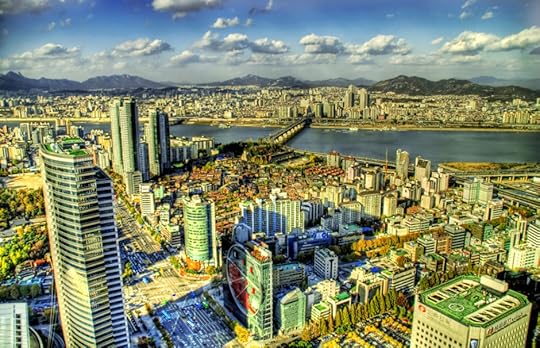
Photo: Stuck in Customs
1. The food is tangy, piquant, pickled, and awesome.
Just about every corner watering hole whips up dazzling barbecues, stews, and pickled vegetables. It’s spicy, and that’s a good thing.
2. The locals will go out of their way for you.
Even if you don’t speak Korean, locals will eagerly befriend you and build a brotherly bond. It’s called “jeong.” The night might never end.
3. It has everything that once made Tokyo cool.
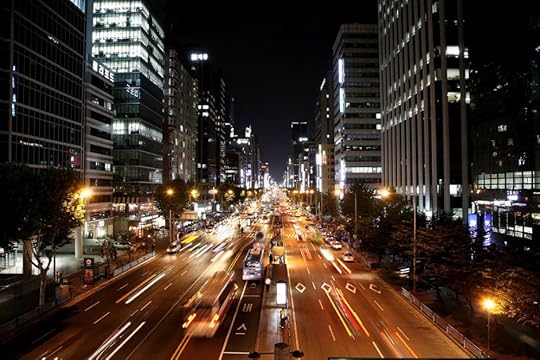
Photo: wwian
Enjoy science fiction? Seoul is now the inspiration for future cityscapes.
4. It’s in the midst of a global awakening.
With dizzying speed, Seoul has emerged as an international hub. Just two decades ago, it was a grimy, industrial, and unpleasant backwater. Now it’s got Gangnam style.
5. The national swill is going premium, and you’ll want to drink a lot of it.

Photo: Hyunwoo Sun
Soju — literally, “burned liquor” — is celebrated for its efficiency: It gets you drunk fast and cheap. Many old brands are so bad they double as industrial cleanser. But no more: A wave of newer soju brands are making Korea’s vodka-like drink hip, satisfying, and cosmopolitan.
6. The hiking is beautiful.
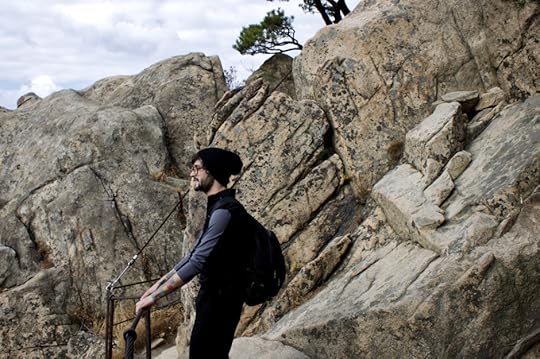
Photo: seafaringwoman
For centuries, Korea’s mountains have captured the imaginations of kings, scribes, and shamans. Beginner or pro, you’ll never run out of peaks to explore.
7. It has the best of old and new.
Medieval palaces, old-school shamans, and traditional wooden homes called hanok give Seoul its warmth. Getting bored? Hitch a ride to Gangnam for a shopping spree and, if it’s your thing, plastic surgery.
8. The world has made its mark here.

Photo: LarimdaME
Missing home? Try budae jjigae, or “army base stew.” It’s a spam and hot dog concoction inspired by American soldiers. It’s actually surprisingly delicious.
9. It’s remains a hidden gem.
Sure, it’s big and bustling. But Hong Kong, Beijing, and Kyoto still get the bulk of the attention.
10. Life is really efficient.
A coffee shop on every corner. An incredible mass transit system. And you’ll never miss a TV show during your commute, thanks to the world’s fastest data speeds and wifi connections. Data coverage is even excellent in subway tunnels.
11. Korean music is much more than just K-pop.
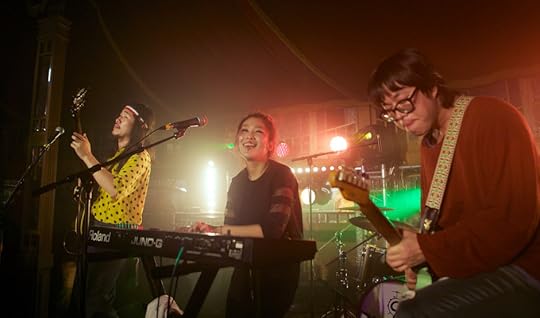
Photo: Guillaume Laurent
Gangnam Style is old news at this point. Instead, check out the blissful cacophony of rock, jazz, and indie playing in the Hongdae nightlife district.
12. It’s the capital of one of Asia’s most passionate democracies.
Seoul could have more protests per capita than any other city. In one day, this correspondent counted four raucous protests within four adjoining blocks.
13. You can make a difference in the lives of the North Korean people.
Think North Korea is some far-off hermit kingdom full of brainwashed minions? Here in Seoul, you can come face-to-face with the refugees who’ve risked everything to escape — and make a big difference in the process.
14. That boyish dictator lives just a couple hours north.
South Korea, a peaceful and prosperous country, is still at war with the last bastion of Stalinism. Yet despite the ever-present threat of nuclear annihilation, incessant blustering about war, and hundreds of miles of razor wire, most South Koreans don’t find themselves all that worried. The resilience is inspiring.
15. You can easily visit the DMZ.
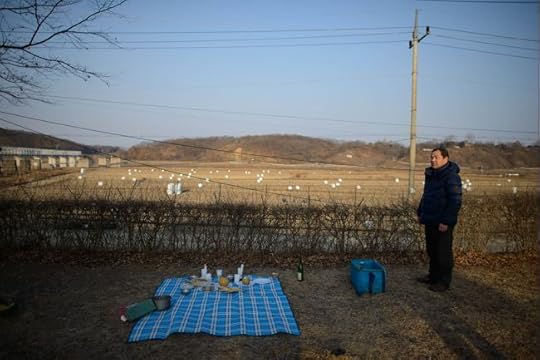
Image: Ed Jones/GlobalPost
Bill Clinton called it the “scariest place on Earth.” But in Seoul, it’s the ideal destination for a day out. Like military history? Check out Panmunjom, the so-called truce village operated by the United Nations, where both sides stand face-to-face, theoretically ready to fire at each other in the event of war. Like wildlife? With so little human activity, the DMZ now has plenty of that, too. It’s actually a pretty good place for a picnic.
16. There’s a café for sheep.
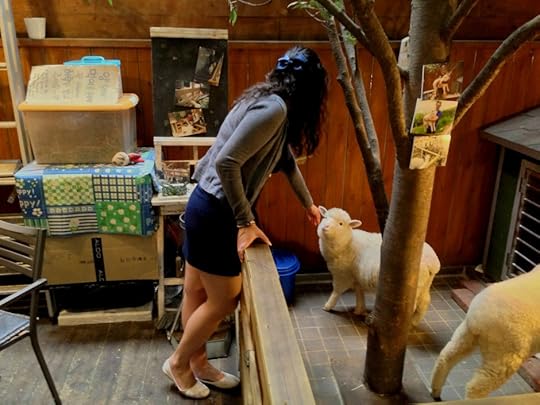
Photo: stacya
It’s the Year of the Sheep, so why not celebrate? In the artsy backstreets of Hongdae there’s a coffee shop where a small flock of sheep and some patrons mingle and graze freely.
17. Kimchi mandu is all that is missing from your life.

Photo: avlxyz
Take a Chinese-style dumpling. Stuff it with kimchi. Eat. Your new breakfast.
18. You’ll want your flowers to smell like kimchi.
The film Birdman won four Oscars. It also angered a few patriotic Koreans. When Emma Stone’s character casually remarks that a sidewalk flower stall in New York City “smells like f*ing kimchi,” South Koreans winced. Stone’s character clearly isn’t fashionable enough to appreciate the pungent cabbage that people here inhale every day. The reality is, the aroma of kimchi is to die for.
19. You can eat octopus tentacles that squirm in your mouth.

Photo: mmmyoso
When an octopus is killed, its nerve-endings live on, meaning its slimy appendages continue to wriggle and stick to surfaces after death. In Seoul, this is a delicacy called sannakji, a chopped-up little octopus that desperately clings to your mouth as you chew and prepare to wash it down with soju. Be sure to chew thoroughly: the little squirmers can cling to the throat, suffocating a handful of people each year.
20. Koreans make awesome films.
Japanese and Hong Kong-based superstars once smashed the Hollywood scene; think Rush Hour and Dragonball Z. Now, Korea is pumping out cult classics like Snowpiercer and Oldboy.
21. The nightlife never ends.
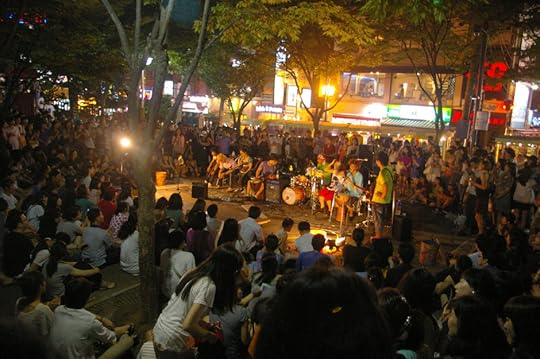
Photo: Julio Martinez
Koreans start their drunken, shot-pounding evening with “il-cha”: meal and drinks number one. Then there’s “i-cha“: meal and drinks number two. If you can hold it, you’ll hit up “sam-cha“: meal and drinks number three. If you’re still not vomiting or passed out, you get the picture.
22. The karaoke also never ends.
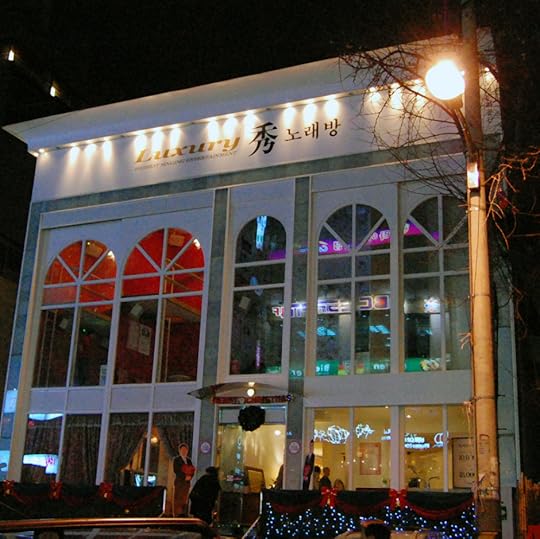
Photo: Showbizsuperstar
Thought karaoke was a Japanese thing? Neon-lit Korean neighborhoods are overloaded with noraebang, the local answer to this godly Asian invention. And don’t even plan on getting out. As the clock ticks down, the owner will quietly add 10 more minutes, followed by another 10 minutes, and so on… ensuring you’re plenty boozed up and happy to stay all night.
23. It won’t bankrupt you.

Photo: kalleboo
Tokyo is through the roof. Hong Kong is unbearable. Even Shanghai is getting out of control. But Seoul is surprisingly affordable, with reasonable rents and a fun lifestyle that will keep your wallet intact.
24. It’s clean and increasingly green.
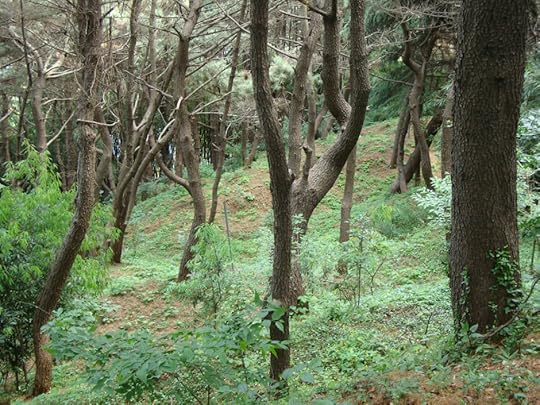
Photo: Jens-Olaf
Street sweepers are constantly clearing the sidewalks. Garbage is separated by type, and you are legally required to recycle. Parks are popping up. Inspired by New York, the mayor wants to plant a colorful garden to beautify an ugly, rickety overpass.
25. You’ll want to sleep on the floor.
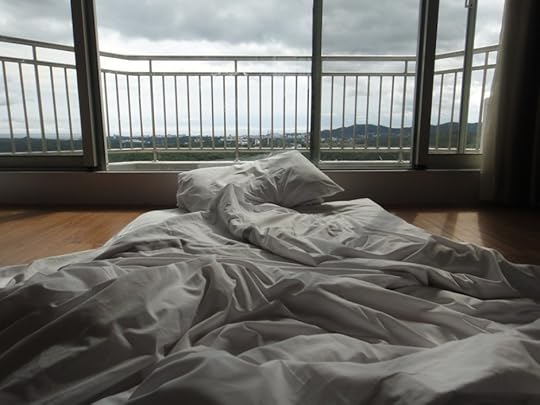
Photo: ejorpin
Beds are for wimps. Korean homes are equipped with a unique heating system called ondol, which warms up your room via the floor. With the ground below you snug and toasty, you’ll find your floor the perfect substitute for a bed during those unforgiving winters. 
By: Geoffrey Cain, GlobalPost
This article is syndicated from GlobalPost.
March 11, 2015
This short captures the heart of NYC
Follow Matador on Vimeo
Follow Matador on YouTube
WHEN YNON LAN VISITED New York for the first time, he decided to take a lot of pictures. He then took the hundreds of still images which captured four common sights from around the city — yellow cabs, people walking somewhere in a hurry, Starbucks signs, and brownstones — and spliced them all together to look like moving images.
The result is incredible: Lan’s video manages to capture the incredible diversity of New York City while simultaneously capturing the common elements that tie the city together as a whole. Give the video a watch — it’s only one minute long — and check out Lan’s other work here. 
Mapping foreigners in every US state
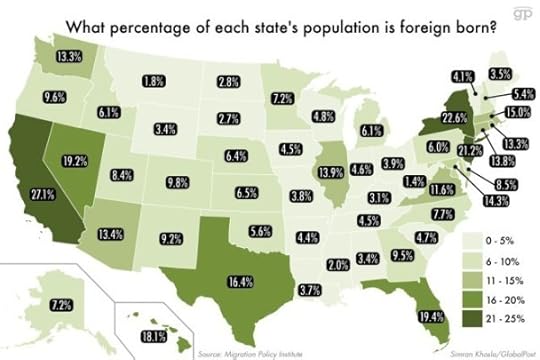
Despite living in a “nation of immigrants,” as the old saying goes, Americans are pretty divided in how they feel about newcomers to the US. After a recent decision to make the path to citizenship easier for undocumented immigrants, a Pew poll found that approximately 50 percent of respondents disapproved of the decision, and 46 percent approved.
While much of the hot debate over immigration in the United States centers around its neighbors to the south, the breakdown of US immigrants is actually pretty diverse. There are nearly 41 million immigrants living in the country — and about 11.6 million of them are from Mexico, according to the Migration Policy Institute.
So where else are US immigrants coming from? In 2012, many also came from China, India, the Philippines, and the Dominican Republic. 
By Simran Khosla, GlobalPost
This article is syndicated from GlobalPost.
I met my husband in the sea
Follow Matador on Vimeo
Follow Matador on YouTube
THE MOKEN PEOPLE LIVE ENTIRELY off the sea. The nomadic ethnic group lives along the oceans of Burma and Thailand, sailing the seas in their handmade boats and living off whatever they catch with their nets and spears.
Documentaries will usually focus on that element of the nomadic sea lifestyle — the boats, the spearfishing, the ability to hold their breath for a very long time — but this mini-documentary by Olivia Wyatt talks about the love lives of the Moken people. Their marriage rituals are simple and, unsurprisingly, sea-based. Give it a watch. And a quick warning: there’s some brief, mild, totally unoffensive nudity in this film, so maybe don’t watch it while your boss is hanging around. 
24 funniest expressions from Spain

Photo: Chris Zerbes
Hacé clic para leer este artículo en Español. Tambien podés darnos un “me gusta” en Facebook!
1. A Spaniard is not “drunk,” he “goes fart.” (va pedo)
2. You won’t notice when a Spaniard is “lying to you,” instead you’ll see “his feather duster is showing.” (se le ve el plumero)
3. A Spaniard is not “flirting with you,” he’s “throwing the disks at you.” (te tira los tejos)
4. A Spaniard doesn’t feel “embarrassed” when he has to do something, it “gives him a stick” (le da palo) and “stays cut.” (se queda cortado)
5. A Spaniard is not “distracted,” he is “in Babia.” (está en Babia)
6. A Spaniard is not “crazy,” he is “like a goat” or “like a watering can.” (como una cabra and como una regadera)
7. A Spaniard is not “funny” and “full of jokes,” he is “a horny person.” (es un cachondo)
8. A Spaniard doesn’t “dislike” you, you “fall fat” on her. (le caes gordo)
9. A Spaniard doesn’t “bother” you, she “gives you the can.” (te da la lata)
10. A Spaniard doesn’t think something is “obvious”, she believes “it falls like a drawer.” (cae de cajón)
11. A Spaniard is not “sleeping”, she is “rubbing.” (está sobando)
12. A Spaniard doesn’t “do something wrong”, he “shits it.” (la caga)
13. A Spaniard doesn’t “make a scene,” he “makes a Christ.” (monta un cristo)
14. A Spaniard doesn’t “overthink” things, he “grates himself” (se ralla) or “eats his pot.” (se come la olla)
15. A Spaniard doesn’t “die,” he “stretches his leg.” (estira la pata)
16. A Spaniard doesn’t “tell you off,” he “sings you the forty.” (te canta las cuarenta)
17. A Spaniard doesn’t “realise” or “become aware” of something, he “falls off the donkey.” (cae del burro)
18. When Spaniard stay unmarried they’re not “spinsters”, they are “left to dress the saints.” (se quedan para vestir santos)
19. A Spaniard doesn’t “earn a lot of money suddenly”, he “makes his August.” (hace su agosto)
20. A Spaniard is not a “happy-go-lucky” person, he is a “hail-to-the-Virgin.” (es un Viva la Virgen)
21. A Spaniard doesn’t “avoid a responsibility,” he “slips the bulge.” (escurre el bulto)
22. A Spaniard doesn’t “eat between meals,” he “kills the worm.” (mata el gusanillo)
23. A Spaniard won’t “go crazy”, he’ll “lose his North.” (pierde el Norte)
24. A Spaniard doesn’t “fall asleep,” he “stays fried.” (se queda frito) 
8 American habits I lost in China

Photo: Mills Baker
1. Having body image issues
Public bathrooms are very different in China. Moving there, I knew squat toilets predominated, and I knew Man / Woman (男/女) restrooms were not uncommon. I was surprised to find out, however, that in many places the stalls separating the porcelain holes in the floor are doorless dividers about the height of a five year old. I made this estimate against the group of giggling girls, I guessed to be about six years old, who trailed me into a restroom in an outlying area of Xiāntáo, where discernibly few foreigners are seen.
They clustered into the stall next to mine, straining to keep their excited chatter to a whisper. In the college dorms, I would totally freeze up if anyone came into the bathroom to brush their teeth while I was trying to pee behind closed doors. These little girls actively waiting for me to do the deed in a hardly private space inspired a whole new level of performance anxiety. At this point, however, I’d been looking for a Woman bathroom for over an hour could wait no longer.
I took a deep breath and assumed the position. Precisely at the pivotal moment, all their little heads popped over the wall, screeching and fighting for a chance to point out this or that about me. All I could do was laugh and let go with a little wave to the girls. In that moment, my American sense of shame about my body went down the toilet in a mighty release and my puritanical clinging to modesty was replaced with a deep sense of objectivity and humor about life.
2. Waiting patiently for things
People in China do not line up and wait. They cluster and push, and not in the sort of polite way you may shoulder through a crowded club, but in the manner strictly forbidden in school. I couldn’t do it for the longest time, and missed many trains as a result. One night in Hangzhou, I was clustered next to a tiny grandma in a narrow chute, waiting for admission to Impression Westlake.
Tension was high. Seating was open. Thousands of people had waited a long time to see this and wanted the perfect spot. When the gates opened, Grandma did not push or shove me. She grabbed my right boob like a rock hold, with her eagle-like talon of hand, and propelled herself with all her might headlong into the scrambling crowd. In an instant, my inhibitions shattered and I conquered my first crowd like a champion swimmer pushing aside the waves. I got a perfect seat right on the lake and never missed another train in China again due American behavioral mores!
3. Expecting personal space to be respected
When I first traveled in China in 2006, I believe lǎowài (Western foreigner) sightings were fairly uncommon in many of the fishing villages at the outer edges of Hong Kong. My boyfriend had poker-straight, dark brown, long hair above a red, gold, brown, and black kinky-curly beard. He looked like a ’70s porn star trying to go incognito on the cheap. We were eating noodles at an outdoor stand when a random group of little kids ambushed him. Pawing him and trying to rip the beard off his face, they demanded “Disguise? Disguise?”
He gentled them off and showed them it truly was real hair, attached to real skin that really hurt a lot when pulled. The kids took to more gently tugging and ooohing and ahhhing. When that got old, several girls twisted their fingers into my light brown curly hair. After about ten minutes, the novelty wore off for them, but we were left with a joke that never got old for years.
I didn’t start running around tugging on old ladies’ braids or rubbing men’s bellies when they would stand around with their shirts folded up to the nipple line, but I became fine with people pressing up against me in crowds, staring at me in restaurants, and pointing at me on the street as is the norm for everyone in a place where personal space isn’t a cultural concern.
4. Not talking to strangers
In Hong Kong, I commonly met people eager to practice their English and often in quite unexpected places. On Lantau Island, a woman holding a huge ladle of water awaited me just beyond my half-stall in a non-star rated bathroom. She wanted to help me flush the porcelain hole, insisting it was her pleasure to assist a foreigner. After returning the ladle to its bucket, she shook my hand and introduced herself as Sue. She wanted to be my friend and guide while I was on the island for the “pleasure of company and good English speaking.”
Sue was proud to have shaken hands because it was a Western thing from which most Chinese people refrained for sanitary reasons. She explained that, as well as many other cultural nuances, while leading me through a Mangrove Forest, across a silvery beach and to her two-room home where she fed me delicious homemade dumplings and told me stories about her parents before taking me to the dock to catch my ferry. Talking to strangers was my only way into the otherwise inaccessible homes, thoughts, and feelings of the people at the heart of the country. It remains my number one rule to break when living abroad and even at home.
5. Being safety conscious
Nope. Not in any arena ever. Safety is a purely personal choice in China. If you don’t want to potentially die, don’t beg the moped taxi driver to get you to the train in two minutes when it’s fifteen away. He’ll deliver you in two whether you’re having a heart attack or loving the ride.
I will say, if all your neighbors suddenly start wearing masks, you may like to try one too. Mine is a very fashionable plaid navy blue!
6. Talking quietly
Tones may shift with pitch perfect precision all over China, but whether you’re inside or outside or underground, the choices for speaking volume seem to only be ‘loud’ or ‘louder’.
7. Communicating through words
Learning a Chinese language is hard. If you’re not careful, you could call your mom (mā, 妈) a horse (mǎ,马) in Mandarin. Each syllable has several meanings, depending on its tone, and all the different pronunciations, translations, and corresponding characters need to be memorized. With all the tones being pitch specific, and me being close to tone deaf, getting a glass of water was often an insurmountable feat. In my first sweaty weeks in China, I stumped many a person, desperately chirping my most perfect shuǐ, until finally choosing dehydration over fainting from fruitless lingual exertion.
Sweltering on the edge of collapse one particularly dizzying Shenzhen afternoon, I had a massive Ah-ha! moment. Everything I needed to know about life in China, I learned backwards in kindergarten. “Use your words,” was the first mandate I debunked. I could sketch, pantomime and even moo and oink on occasion to make myself understood. People laughed and played along with the urgency of winning a timed round in a board game. One guy took to full-on barking and running in circles to describe his dog! Letting go of “properly” communicating opened up a world of friends and fun everywhere I went.
8. Being honest
When I was little, my Grandmom used to ask if I was “telling stories” to see if I was lying. In China, “telling stories,” and unraveling some of the stories I was told, was part of the excitement. Though the narrative constructs were sometimes frustrating to navigate, climbing around inside all the webbing added an element of challenge and play to even the most banal daily events.
I found breaking this rule very useful upon returning home when describing my adventures to my parents, especially as related to #5: Being safety conscious. 
Matador Network's Blog
- Matador Network's profile
- 6 followers



